Its simplicity, elegance, and historical significance make the longbow an appealing option for archery enthusiasts. Archery is much more than just a sport, it’s an art form that requires skill, precision, and creativity.
The purpose of this guide is to introduce beginner archers to the basics of using longbows, including how to select the right bow, master techniques, and maintain the equipment they use.
Can You Tell Me What A Longbow Is?
Characteristics And Definitions
A longbow is a tall, powerful bow used for centuries, especially in the medieval period in England. It usually measured around 6 feet in height with straight limbs and didn’t have complicated mechanisms. A longbow is built from a single piece of wood or laminated material, creating a clean aesthetic that many archers appreciate.
In this bow type, the limbs bend when the string is released, storing energy that propels the arrow toward its target with remarkable speed and power. This bow is designed with simplicity and effectiveness in mind, relying on skill rather than complicated technology.
Evolution And History Of The Longbow
Longbows have been used throughout history, with evidence of their use found in different cultures all over the world, dating back to ancient times. In England, the longbow became particularly renowned during the 14th and 15th centuries, playing a crucial role in battles like Agincourt. Its effectiveness in warfare made it a symbol of strength and skill during those years.
Modern longbows can be made from fiberglass and carbon, as well as native woods like you. This enhances durability and performance while maintaining the traditional form. In addition to connecting modern archers with their past, the longbow’s rich history highlights its relevance to the archery community of today.
Why Choose A Longbow?
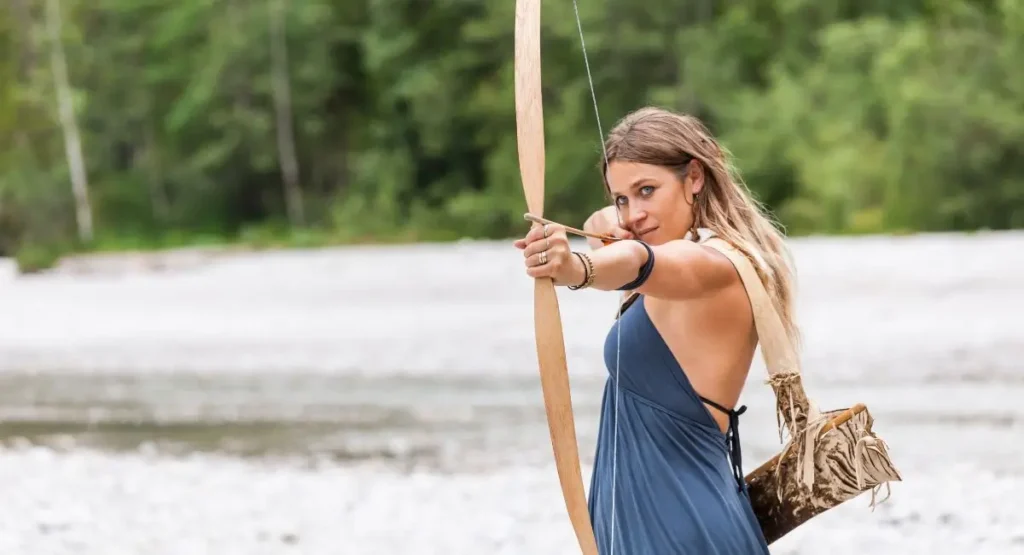
The Benefits Of Longbows
A longbow offers many advantages to beginners. First and foremost, it is typically more accommodating when it comes to draw length and weight, so novice archers can learn proper form and technique without getting frustrated by more complicated equipment.
In addition, the longbow promotes a stronger connection to the shooting process. During practice sessions, when honing fundamental skills is crucial for long-term success, archers can concentrate on their stance, draw, and release without distraction.
An Analysis Of Other Types Of Bows
It is common for beginners to compare longbows with other types of bows, such as recurves and compound bows. Recurve bows can also be beneficial for beginners, but they require more technique due to their curved limbs.
Ultimately, longbows stand out for their accessibility and timeless appeal, making them a fantastic entry point into archery. Meanwhile, compound bows feature intricate pulleys and cables, making them easier to draw but more complex to maintain and set up.
What Are The Types Of Longbows?
The Traditional English Longbow
The traditional English longbow has impressive height and unique craftsmanship. The traditional English longbow has a storied past, as it was the weapon of choice for legendary archers like Robin Hood. This bow type is primarily made from yew, with a distinctive D-shaped cross-section that enhances power and efficiency.
Its historical significance and connection to English archery’s rich heritage make this type of longbow popular with many longbow enthusiasts. Furthermore, the traditional design allows for a smooth, powerful shot that is very satisfying to shoot.
The Modern Longbow
A modern longbow, on the other hand, may be constructed with advanced materials, such as fiberglass and carbon composites, while retaining the classic shape. These materials enhance durability and performance, making them a popular choice among contemporary archers.
The modern longbow is often lighter and more durable than its traditional counterpart, resulting in an excellent balance of functionality and ease of use. In addition to helping beginners develop their skills without the weight of an all-wood bow, modern longbows can offer a more forgiving learning experience.
The Traditional Longbow Versus The Modern Longbow
It can be challenging for beginners to decide between a traditional longbow and a modern longbow. Traditional longbows provide a direct connection to the past, whereas modern longbows can be more user-friendly due to improved technology.
Traditional longbows may be preferred by those who value history and authenticity, while modern longbows may be preferred by people who prioritize performance and ease of use. Both options offer distinct advantages and can result in rewarding archery experiences.
The Factors To Consider When Choosing A Longbow
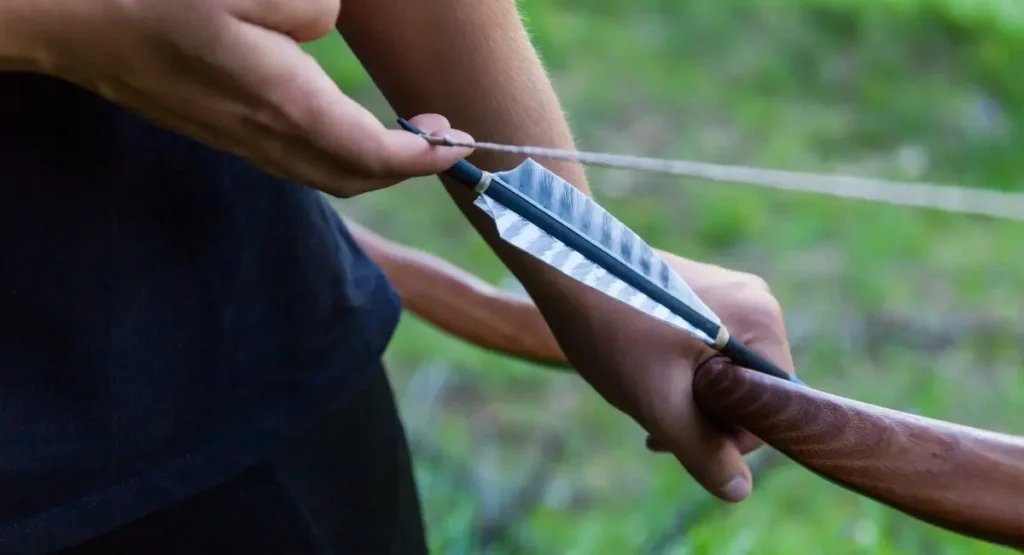
Draw The Weight
Longbow draw weight refers to how much force is required to pull the bowstring back. For beginners, it’s important to choose a draw weight that’s appropriate for their strength and skill.
Beginners should use a draw weight between 20 and 30 pounds. This allows them to practice their technique without straining. Over time, as proficiency increases, archers can gradually move to a higher draw weight to enhance their accuracy and shooting power.
Bow Length
Bow length is also a fundamental factor to consider. Longer bows are typically more stable and accurate; shorter bows are more maneuverable. The bow length should be determined by the archer’s height and draw length.
For beginners, a simple guideline based on their height can be used to determine the right bow length. For instance, if a person is between 5 feet and 5 feet 6 inches tall, a bow length of around 66 inches is typically ideal. The optimal bow length for people who are taller than 6 feet is 70 inches or more.
Material
Traditional longbows are often made from wood, giving them a classic aesthetic and feel that provides a longbow’s longevity and performance. In contrast, modern longbows may use synthetic materials such as fiberglass and carbon, which provide durability and weather resistance.
It is important to maintain wooden bows to prevent warping, whereas synthetic bows lack the traditional feel and character. Beginners should consider their commitment to archery and choose materials that align with their goals and maintenance preferences.
Hand And Grip Orientation
Longbow grips play a significant role in overall shooting performance, so understanding hand orientation is crucial for beginners. Longbows come in left-hand and right-hand designs. If you choose the right orientation, you will be more comfortable in shooting and more accurate.
It is important for beginners to test out different longbows before purchasing in order to find a grip that feels natural. A comfortable grip allows archers to maintain better control and stability during their shots, which will improve accuracy over time.
Choosing A Longbow For A Beginner
Recommended For Longbows
When selecting a longbow for a beginner, there are several excellent options on the market. Here are some recommended models for novices:
- Daisy 40 lb Longbow – This entry-level longbow is lightweight and easy to handle, with a draw weight suitable for beginners. It’s made from durable materials, ensuring a long lifespan for aspiring archers.
- Bear Archery Grizzly Longbow – The Bear Archery Grizzly is a classic longbow known for its quality and craftsmanship. With a draw weight range ideal for beginners, this bow is suitable for those looking for a reliable, performance-driven longbow.
- Samick Sage Takedown Longbow – This takedown longbow allows beginners to change draw weights easily, accommodating their growing strength. Its versatility and affordability make it a popular choice among novice archers.
Availability And Price Range
Beginners can expect to spend anywhere between $100 and $500 on a quality longbow depending on the materials and craftsmanship.
Beginners can test longbows in person at local archery shops, where they can choose from a variety of longbows. Amazon, Cabela’s, and specialty archery sites also provide extensive longbow selections, along with customer reviews, to aid with their decision-making.
A Guide To Using A Longbow
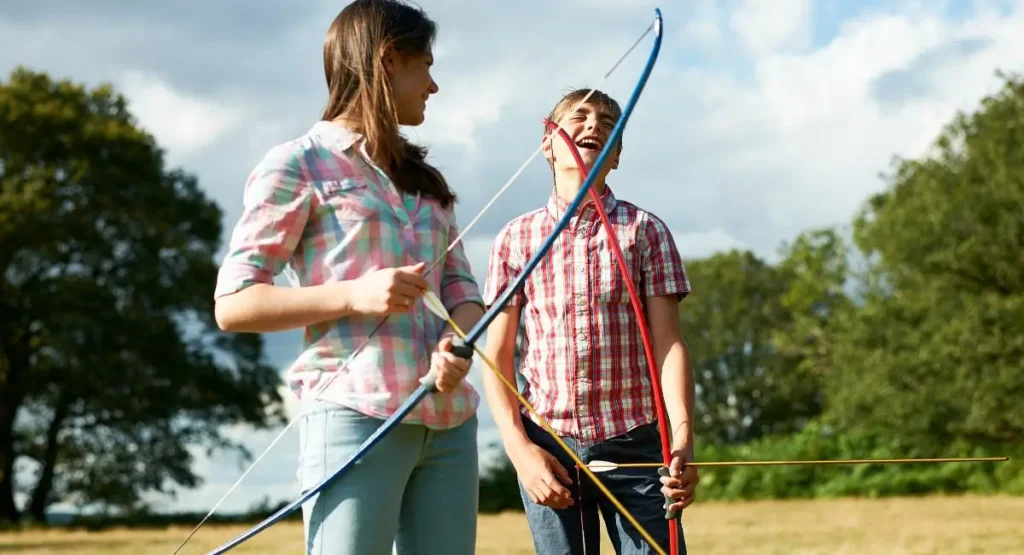
Beginners’ Basic Techniques
A stable stance involves positioning the feet shoulder-width apart, with one foot slightly forward to stabilize the body. Beginners should practice by practicing proper grip, gripping, and drawing methods.
During extended shooting sessions, a relaxed hand allows better control and reduces fatigue. Anchor the string near your face when drawing back the bowstring. It is done by keeping your elbow level and aligned with the flight path of the arrow.
How To Avoid Common Mistakes
A common mistake made by beginners when shooting a longbow is improper alignment, which results in inconsistent accuracy. The archer should practice aiming with both eyes open and maintaining a straight line from the bow to the target to keep alignment.
It is also common for archers to grip the bow too tightly, which can cause wrist and arm tension. To overcome this, focus on relaxing the grip and relaxing the back muscles to draw tension. A novice archer can improve their shooting technique by practicing regularly and being aware of these details.
How To Maintain Your Longbow
Longbow Care And Storage Tips
The best way to maintain a longbow is to clean the string after each use with a soft cloth to remove dirt and debris. This simple step can prevent wear and tear and extend the lifespan of the string.
Whenever possible, keep your longbow out of direct sunlight, as direct sunlight can warm the wood and cause it to warp. Instead, store it in a cool, dry place and keep it protected by a protective case.
Troubleshooting And Common Issues
A longbow may cause some problems for beginners, such as limb twisting and string wear. If the limbs begin to twist, this can affect accuracy. Check your bow’s alignment regularly and adjust as needed.
Getting familiar with basic troubleshooting steps can help save time and frustration while improving the enjoyment of archery. If the bowstring is fraying or worn, it should be replaced immediately, preventing accidents.
Conclusion
It is important to gain a thorough understanding of longbows before you begin your archery journey. Understanding the history, types, key factors, and techniques associated with longbows will allow you to make informed decisions when you enter the world of archery.
Do not hesitate to seek advice from experienced archers or join local clubs for support. Archery is a rewarding pursuit that combines patience, focus, and enjoyment. Get to know longbows, connect with like-minded enthusiasts, and most importantly, have fun!
Frequently Asked Questions
What Longbow Should I Start With?
Beginners should look for a longbow with a draw weight between 20 and 30 pounds, like the Samick Sage or Daisy Longbow. These models offer high-quality performance and manageability.
Are Longbows Good For Beginners?
Yes, longbows are great for beginners! They are forgiving, straightforward to use, and allow new archers to focus on developing their skills without the complexity of other bow types.
What Type Of Bow Should A Beginner Use?
A longbow is an excellent choice for beginners, offering simplicity and a direct connection to the shooting process.
What Size Longbow Do I Need?
The longbow size typically depends on the archer’s height. A general guideline is that shorter individuals should opt for bows around 66 inches, while taller archers may prefer 70 inches or more.
Is A Longbow Better Than A Recurve?
The choice between a longbow and a recurve ultimately depends on personal preference and comfort. Longbows offer a traditional approach, while recurves provide added power and versatility for some archers.
Is A Longbow Better Than A Compound Bow?
For beginners, longbows generally provide a more straightforward learning experience than compound bows, which can be more complex to set up and maintain.
Recommended Articles
- The Ultimate Guide To Choosing Between Compound Bow vs Crossbow
- How To Carry A Bow – Tips & Techniques For Archers
- Ultimate Guide To Installing Compound Bow Arrow Rest
- The Ultimate Guide To The Best Archery Brands Of Compound Bows
- How To Utilize Recurve Bow Sights: A Comprehensive Guide
- The Archer’s Craft: Understanding Parts Of Recurve Bow

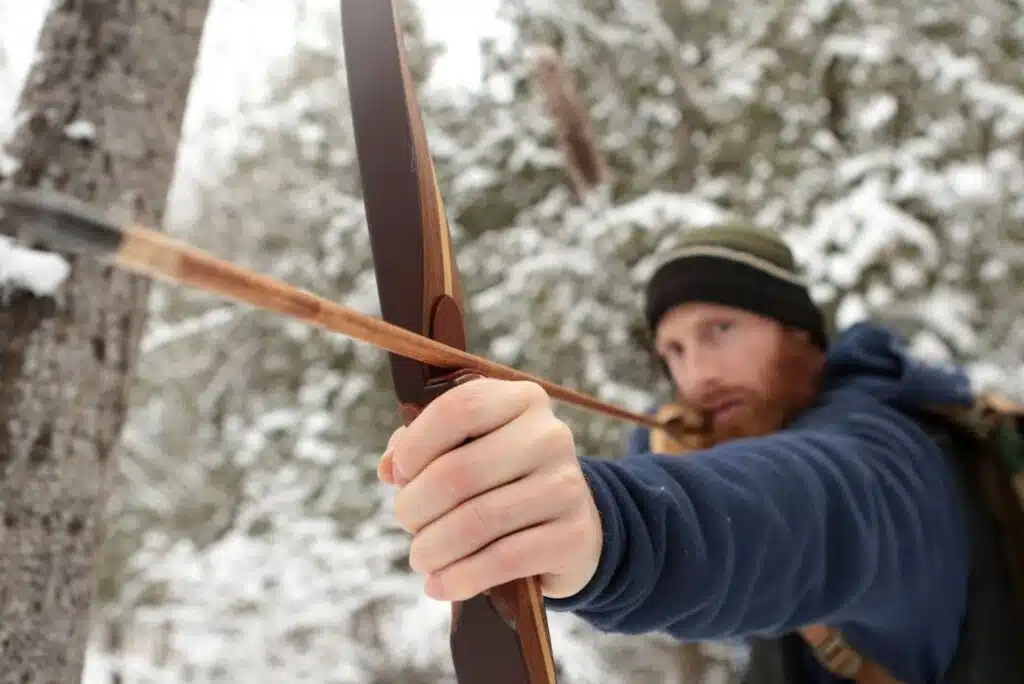
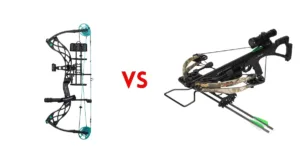
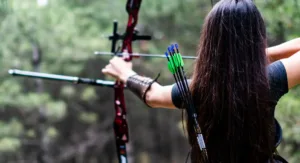
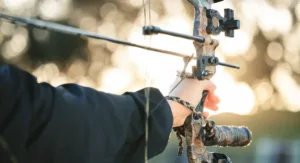

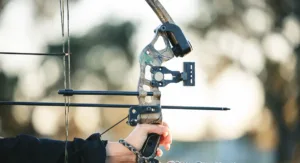
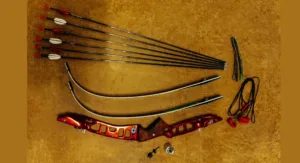
6 thoughts on “Longbows For Beginners: A Beginner’s Guide”
Comments are closed.